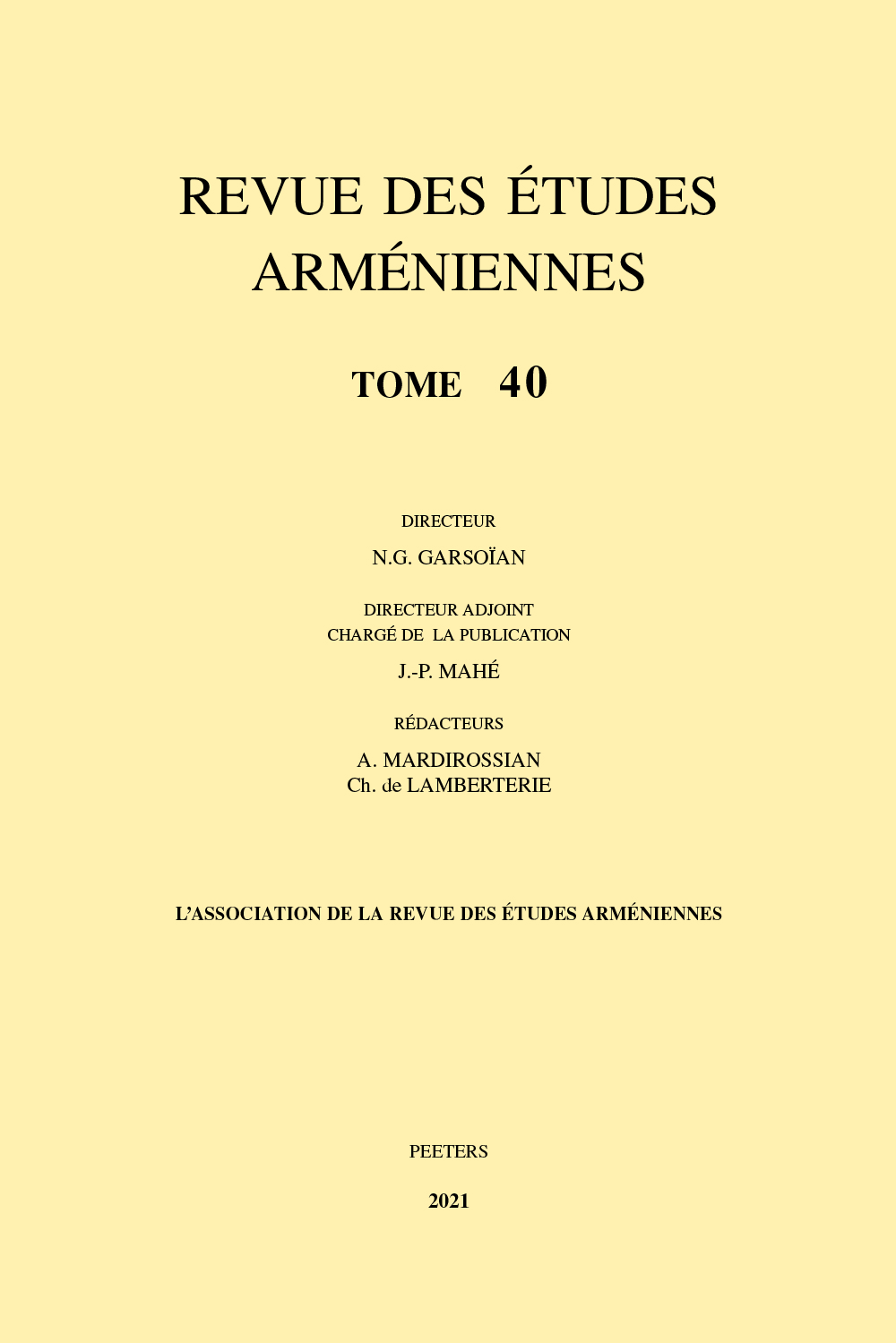 previous article in this issue previous article in this issue | next article in this issue  |

|
Document Details : Title: La représentation de souverains artaxiades de Grande-Arménie sur deux intailles et deux camées romains Author(s): ARAKELIAN, Roy , YEVADIAN, Maxime K. Journal: Revue des Études Arméniennes Volume: 39 Date: 2020 Pages: 199-214 DOI: 10.2143/REA.39.0.3288972 Abstract : The Hellenistic period is mainly documented, for the kingdom of Great Armenia, by literary sources. Archaeological excavations of some sites of the Republic of Armenia (Artaxata or Armavir, for example) effected throughout the twentieth century, has furthered a knowledge still largely lacking. Monetary issues are finally a very important type of sources, though difficult to analyze. It is between these two types of sources that the four new objects we publish must be located. These are two cameos and two intaglios, probably from Roman workshops from the time of the civil wars and the reign of Augustus. One cameo (Museum of Fine Arts, inventory number 01.7595) and one intaglio (private collection) can be attributed, with a very high probability, to the most powerful ruler of the Artaxiad dynasty, Tigran II (95-55 BC), and probably after his defeat against Lucullus and especially Pompey, in 66 BC. The other two objects date from his successors. The first one is a cameo sold, in 2001, by Christie’s, and which we ascribe to Tigran III, the son of Artavazd II, in comparison with the political discourse on the coinage of Augustus of the years 20-18 BC and the coins attributed to it. The last object is an intaglio preserved in the “Cabinet des Médailles” (Paris), under the reference inv.58.1384. This is the negative portrait of a woman generally identified with Erato, a point we have challenged. Indeed, Erato, and his brother Tigranes, have come to power with the support of the Parthians and could not therefore receive anything from the imperial workshops. Conversely, according to the Latin historian Tacitus, a daughter of Tigran III has succeeded her father, with her brother and husband, and could, in our opinion, be identified with this woman whose name we do not know. |
|
